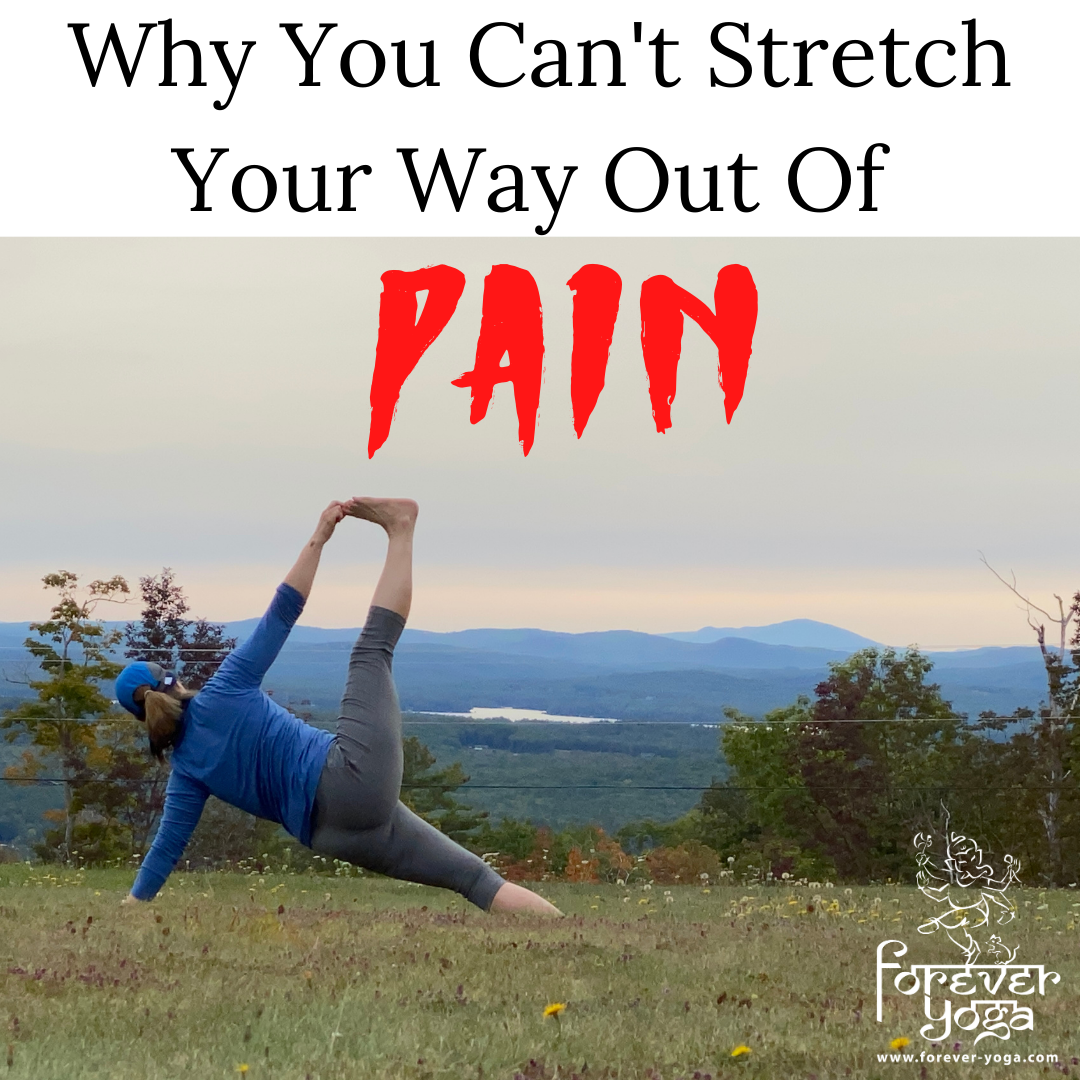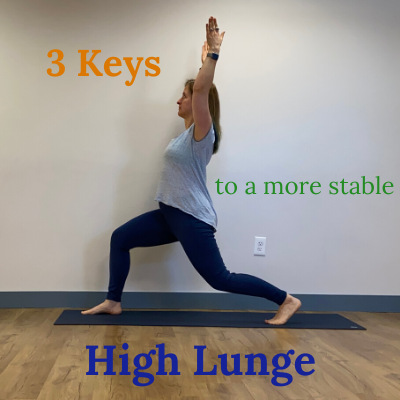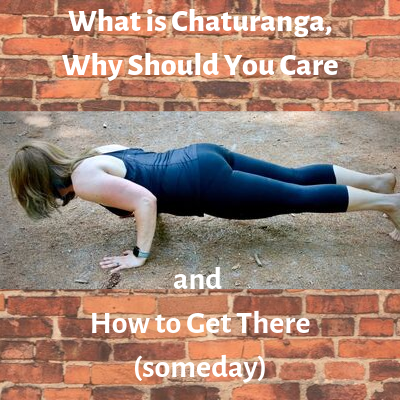Why You Can’t Stretch Your Way Out Of Pain
/Acknowledging bias in our lives is always a good first step toward healing. Yoga teachers and practitioners have long held the belief that if something didn’t feel good in our bodies we could stretch our way out of the problem. I certainly thought that way for many years, particularly around my own back pain. Yet no matter how much I stretched, it didn’t ever seem to get better. I inadvertently realized the error of my ways when I started getting into hiking and began to develop more strength in my legs, hips and core as a result of scaling mountains with a backpack regularly. My back pain started to get better over time and I started to wonder if my hiking had something to do with it. I finally started to put two and two together when I started approaching my yoga practice in a way that incorporated strengthening actions along with the stretching I knew and loved. When I began to understand that the way I had approached yoga in the past had an inherent bias toward stretching and range of motion, and I began to balance that with strengthening actions within the practice, my body responded with less pain and more range. If you’re struggling with pain in certain areas of your body and stretching doesn’t seem to be changing it, here are some things to consider to bring balance to your body and your yoga practice.
Imagine that your muscles are like rubber bands for a moment. Let’s take your arm as an example. Your biceps and your triceps are on opposite sides of your upper arm. When your biceps contracts, your triceps has to lengthen. That’s a really good thing or you wouldn’t be able to bend your elbow! That muscle needs the ability to lengthen (aka stretch). But consider what would happen if your biceps didn’t have the ability to strongly contract. Imagine it was like a rubber band that had lost its spring. You still wouldn't be able to bend your elbow because it wouldn't have the strength to contract enough to create the movement. We might think of this as the muscle being “too long”.
Now imagine it the other way, which is what we often seem to notice the most in our bodies, especially if we’re dedicated yoga practitioners. Imagine you are trying to bend your elbow and your biceps is contracting, but your triceps is SO strong it can’t lengthen to allow the movement to happen. Now we have a situation where the muscle is “too short” or the sensation we often label as “tight”. Thinking about these two opposites starts to allow us to understand why this balance is important.
Another way to think about this - imagine a suspension bridge like the Golden Gate in San Francisco. The cables have to have just the right amount of length and strength to allow the structure to be stable while also allowing for movement. You probably don’t (want to!) think about it when you’re driving over such a bridge, but there are constant small movements due to weight of vehicles, wind speeds, temperature changes, (god forbid) seismic activity and other factors. Our muscles are similar in our bodies, giving stability to our underlying structure but also allowing for movement.
But with the human body there is one more curveball that we also have to consider. Muscles can be tight without actually being strong and they can be long and still be tight. To understand this, consider the person that spends hours a day hunched over a laptop. They might look something like this most of the day:
The body and the muscles are being held in a certain position for extended periods of time. Over time the muscles on the front side of the are being held in a shortened position. They aren’t actually being asked to contract and so they tend to become weak, but they stay shortened and therefore may be perceived as tight. On the other side, the muscles are constantly being stretched, or held in a lengthened position. They can’t possibly contract for many hours a day to counteract the position in which they’re being held, so they are long but are very weak from being over stretched which may be perceived as tightness. These positions of holding when repeated over time tend to bring about this chronic state that may be experienced as painful. An imbalance forms that won’t be helped by simply stretching, particularly for the muscles that are already too long.
These examples are a simplification and a model for a VERY complex system, but hopefully you get the general idea here. Constant stretching of muscles isn’t good, constant contraction of muscles isn’t good. We need muscles that can contract well and lengthen well. We need balance between the two. Without those two things in balance, we may experience pain.
Yoga does mean union after all so is it any surprise that creating balance between length and strength should really be our goal?
So what does this mean for our yoga practice?
The bias of yoga asana, at least the way that its been taught historically, is toward creating length and range of motion. Again, these are good things to have, but yoga can also help us build strength if we approach it a little differently. One way to do this is to engage a muscle at its end range of motion.
For example, let’s take pigeon pose. We might typically think of this posture as a hip opener (aka stretcher), particularly because of the way it may create a sensation of stretch in the hip flexors of the back leg and the rotational muscles of the hips in the front leg. For many people, finding their way into this posture brings them to that end range or maximum range of motion for several muscles. That’s not a bad thing. But now, once at that end range we can ENGAGE and create strength over time by pressing the back leg down and forward and the front leg (shin) down and backward. The legs won't actually move from the shape you’ve put them into, but the muscles will contract and create strength by doing so over time.
The overall effect is that the muscles will, over time be able to move through a full range of motion while also maintaining their strength. That brings us to our ideal state. (In a perfect world anyway. Again this is a complex system.)
Notice that I keep using the words “over time” here. This is not an instantaneous change. It takes constant attention and constant practice.
One last quick note about those long and tight muscles - when we start to address this imbalance it can be challenging. In the example above of our laptop user, if she decides she wants to start to strengthen that back side of the body that is overly long, weak and tight, she may run into one big obstacle, a sometimes painful cramp. 😣 This shows up all the time in the hamstrings for many yoga practitioners in postures and actions like this:
I’m hugging the heel of the back foot toward my buttocks without using my hand or a strap to do so. That asks the hamstrings to contract strongly and that’s often where the cramp happens. If that happens to you don’t give up! Go a little easier the next time around and increase the demand on the muscle(s) that are cramping over time. They’re basically telling you (rather loudly) that they don’t have the strength to do what you’re asking them to do just yet. It’s really something you have to build up to and takes a bit of patience.
I hope this starts to give you some ideas about how to bring more balance between stretching and strengthening into your yoga practice. Strength training outside of yoga certainly isn’t a bad idea for most bodies, but we CAN create more strength and stop worshiping at the altar of range of motion in our yoga practice if we simply bring more balance to our actions. A pain free, healthy and balanced body should always be our goal and bringing a greater focus on strength into our yoga practice can help us get there.







